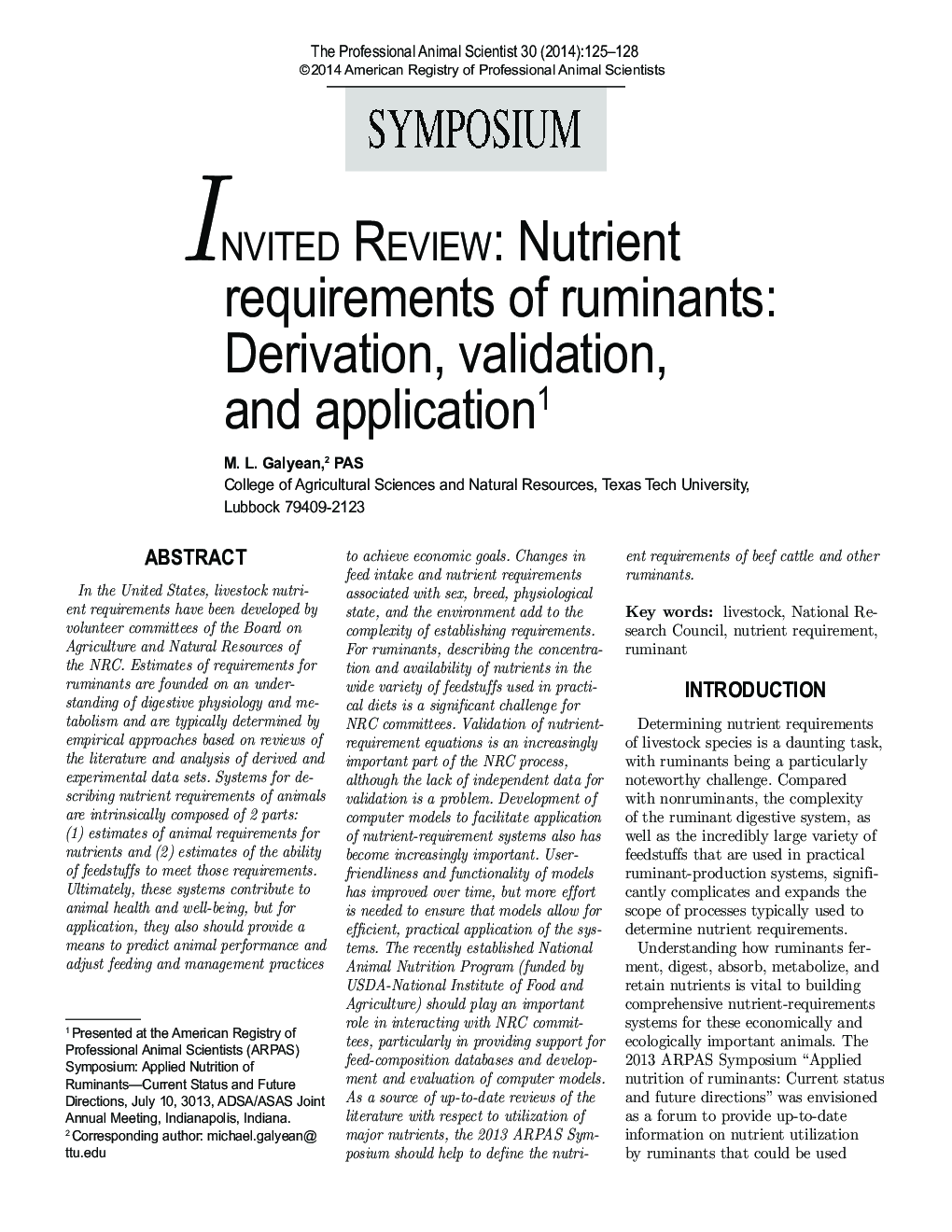| Article ID | Journal | Published Year | Pages | File Type |
|---|---|---|---|---|
| 2453876 | The Professional Animal Scientist | 2014 | 4 Pages |
Abstract
In the United States, livestock nutrient requirements have been developed by volunteer committees of the Board on Agriculture and Natural Resources of the NRC. Estimates of requirements for ruminants are founded on an understanding of digestive physiology and metabolism and are typically determined by empirical approaches based on reviews of the literature and analysis of derived and experimental data sets. Systems for describing nutrient requirements of animals are intrinsically composed of 2 parts: (1) estimates of animal requirements for nutrients and (2) estimates of the ability of feedstuffs to meet those requirements. Ultimately, these systems contribute to animal health and well-being, but for application, they also should provide a means to predict animal performance and adjust feeding and management practices to achieve economic goals. Changes in feed intake and nutrient requirements associated with sex, breed, physiological state, and the environment add to the complexity of establishing requirements. For ruminants, describing the concentration and availability of nutrients in the wide variety of feedstuffs used in practical diets is a significant challenge for NRC committees. Validation of nutrient-requirement equations is an increasingly important part of the NRC process, although the lack of independent data for validation is a problem. Development of computer models to facilitate application of nutrient-requirement systems also has become increasingly important. User-friendliness and functionality of models has improved over time, but more effort is needed to ensure that models allow for efficient, practical application of the systems. The recently established National Animal Nutrition Program (funded by USDA-National Institute of Food and Agriculture) should play an important role in interacting with NRC committees, particularly in providing support for feed-composition databases and development and evaluation of computer models. As a source of up-to-date reviews of the literature with respect to utilization of major nutrients, the 2013 ARPAS Symposium should help to define the nutrient requirements of beef cattle and other ruminants.
Related Topics
Life Sciences
Agricultural and Biological Sciences
Animal Science and Zoology
Authors
M.L. PAS,
